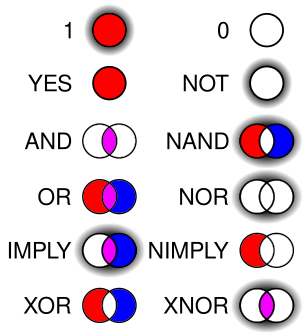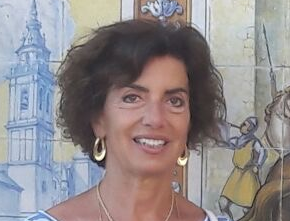Related Research Articles

Cyc is a long-term artificial intelligence project that aims to assemble a comprehensive ontology and knowledge base that spans the basic concepts and rules about how the world works. Hoping to capture common sense knowledge, Cyc focuses on implicit knowledge that other AI platforms may take for granted. This is contrasted with facts one might find somewhere on the internet or retrieve via a search engine or Wikipedia. Cyc enables AI applications to perform human-like reasoning and be less "brittle" when confronted with novel situations.
Knowledge representation and reasoning is the field of artificial intelligence (AI) dedicated to representing information about the world in a form that a computer system can utilize to solve complex tasks such as diagnosing a medical condition or having a dialog in a natural language. Knowledge representation incorporates findings from psychology about how humans solve problems and represent knowledge in order to design formalisms that will make complex systems easier to design and build. Knowledge representation and reasoning also incorporates findings from logic to automate various kinds of reasoning, such as the application of rules or the relations of sets and subsets.
The Semantic Web is an extension of the World Wide Web through standards set by the World Wide Web Consortium (W3C). The goal of the Semantic Web is to make Internet data machine-readable. To enable the encoding of semantics with the data, technologies such as Resource Description Framework (RDF) and Web Ontology Language (OWL) are used. These technologies are used to formally represent metadata. For example, ontology can describe concepts, relationships between entities, and categories of things. These embedded semantics offer significant advantages such as reasoning over data and operating with heterogeneous data sources.
In computer science and information science, an ontology encompasses a representation, formal naming and definition of the categories, properties and relations between the concepts, data and entities that substantiate one, many or all domains of discourse. More simply, an ontology is a way of showing the properties of a subject area and how they are related, by defining a set of concepts and categories that represent the subject.
The Web Ontology Language (OWL) is a family of knowledge representation languages for authoring ontologies. Ontologies are a formal way to describe taxonomies and classification networks, essentially defining the structure of knowledge for various domains: the nouns representing classes of objects and the verbs representing relations between the objects. Ontologies resemble class hierarchies in object-oriented programming but there are several critical differences. Class hierarchies are meant to represent structures used in source code that evolve fairly slowly whereas ontologies are meant to represent information on the Internet and are expected to be evolving almost constantly. Similarly, ontologies are typically far more flexible as they are meant to represent information on the Internet coming from all sorts of heterogeneous data sources. Class hierarchies on the other hand are meant to be fairly static and rely on far less diverse and more structured sources of data such as corporate databases.
A modeling language is any artificial language that can be used to express information or knowledge or systems in a structure that is defined by a consistent set of rules. The rules are used for interpretation of the meaning of components in the structure.

Logic in computer science covers the overlap between the field of logic and that of computer science. The topic can essentially be divided into three main areas:
In information science, an upper ontology is an ontology which consists of very general terms that are common across all domains. An important function of an upper ontology is to support broad semantic interoperability among a large number of domain-specific ontologies by providing a common starting point for the formulation of definitions. Terms in the domain ontology are ranked under the terms in the upper ontology, e.g., the upper ontology classes are superclasses or supersets of all the classes in the domain ontologies.
In computer science and artificial intelligence, ontology languages are formal languages used to construct ontologies. They allow the encoding of knowledge about specific domains and often include reasoning rules that support the processing of that knowledge. Ontology languages are usually declarative languages, are almost always generalizations of frame languages, and are commonly based on either first-order logic or on description logic.
Ontology alignment, or ontology matching, is the process of determining correspondences between concepts in ontologies. A set of correspondences is also called an alignment. The phrase takes on a slightly different meaning, in computer science, cognitive science or philosophy.
Frames are an artificial intelligence data structure used to divide knowledge into substructures by representing "stereotyped situations". They were proposed by Marvin Minsky in his 1974 article "A Framework for Representing Knowledge". Frames are the primary data structure used in artificial intelligence frame language; they are stored as ontologies of sets.
OntoClean is a methodology for analyzing ontologies based on formal, domain-independent properties of classes developed by Nicola Guarino and Chris Welty.

Christopher A. Welty is an American computer scientist, who works at Google Research in New York and is an Endowed Professor of Cognitive Systems at the Vrije Universiteit Amsterdam. He is best known for his work on ontologies, in the Semantic Web, and on IBM's Watson. While on sabbatical from Vassar College from 1999 to 2000, he collaborated with Nicola Guarino on OntoClean; he was co-chair of the W3C Rule Interchange Format working group from 2005 to 2009.
In philosophy, a process ontology refers to a universal model of the structure of the world as an ordered wholeness. Such ontologies are fundamental ontologies, in contrast to the so-called applied ontologies. Fundamental ontologies do not claim to be accessible to any empirical proof in itself, but to be a structural design pattern, out of which empirical phenomena can be explained and put together consistently. Throughout Western history, the dominating fundamental ontology is the so-called substance theory. However, fundamental process ontologies are becoming more important in recent times, because the progress in the discovery of the foundations of physics spurred the development of a basic concept able to integrate such boundary notions as "energy," "object", and those of the physical dimensions of space and time.
In information technology a reasoning system is a software system that generates conclusions from available knowledge using logical techniques such as deduction and induction. Reasoning systems play an important role in the implementation of artificial intelligence and knowledge-based systems.

In information science a conceptualization is an abstract simplified view of some selected part of the world, containing the objects, concepts, and other entities that are presumed of interest for some particular purpose and the relationships between them. An explicit specification of a conceptualization is an ontology, and it may occur that a conceptualization can be realized by several distinct ontologies. An ontological commitment in describing ontological comparisons is taken to refer to that subset of elements of an ontology shared with all the others. "An ontology is language-dependent", its objects and interrelations described within the language it uses, while a conceptualization is always the same, more general, its concepts existing "independently of the language used to describe it". The relation between these terms is shown in the figure to the right.

Michael Gruninger is a Canadian computer scientist and Professor of Industrial Engineering at the University of Toronto, known for his work on Ontologies in information science. particularly with the Process Specification Language, and in Enterprise modelling on the TOVE Project with Mark S. Fox.
Michael F. Uschold is an American computer scientist, Artificial Intelligence researcher, and consultant, known for his work on knowledge representation and ontology.

Giancarlo Guizzardi is a Brazilian–Italian computer scientist specializing in conceptual modeling, enterprise modeling, applied ontology and ontology-driven information systems. He is a professor in the computer science department of the Free University of Bolzano-Bozen in Italy and a senior researcher and founding member of the Ontology & Conceptual Modeling Research Group (NEMO) in Vitoria, Brazil.

Paola Velardi is a Full Professor of computer science at Sapienza University in Rome, Italy. She is an Italian scientist born in Rome, on April 24, 1955. Her research encompasses natural language processing, machine learning, business intelligence and semantic web, web information extraction in particular. Velardi is one of the hundred female scientists included in the database "100esperte.it". This online, open database champions the recognition of top-rated female scientists in the Science, Technology, Engineering and Mathematics (STEM) area.